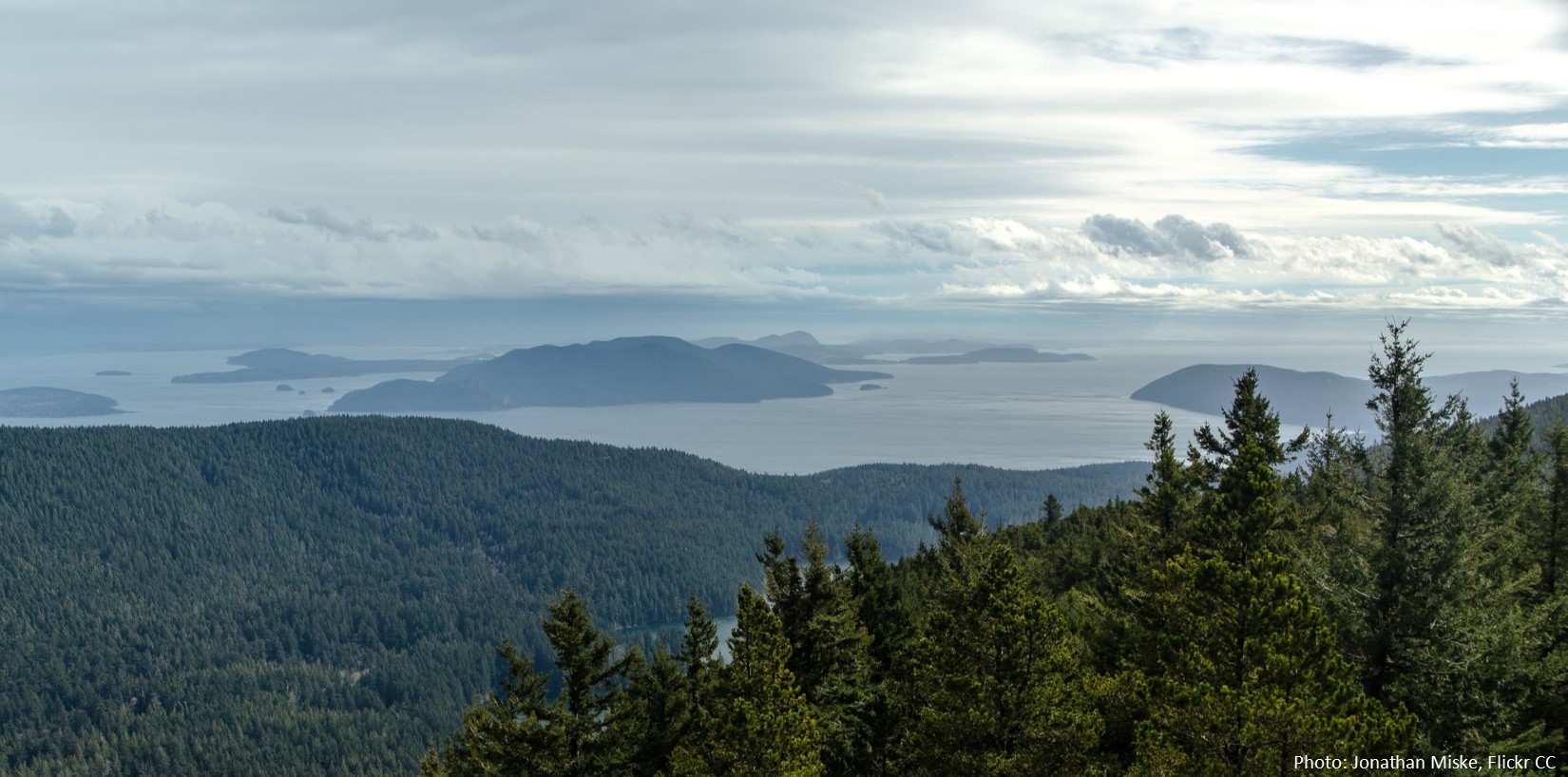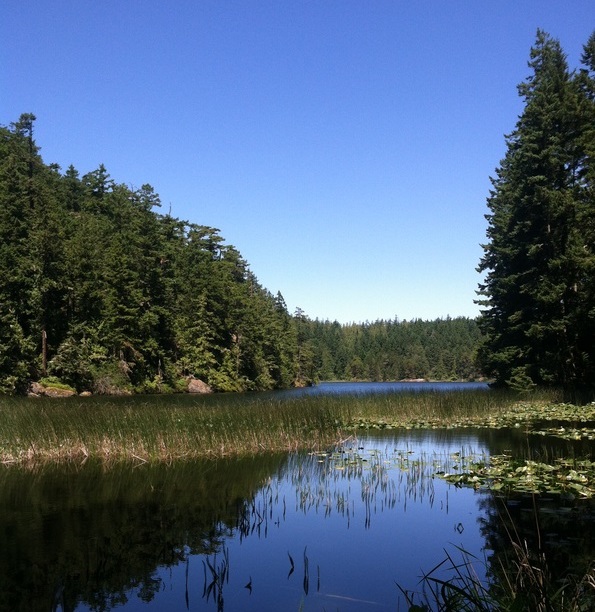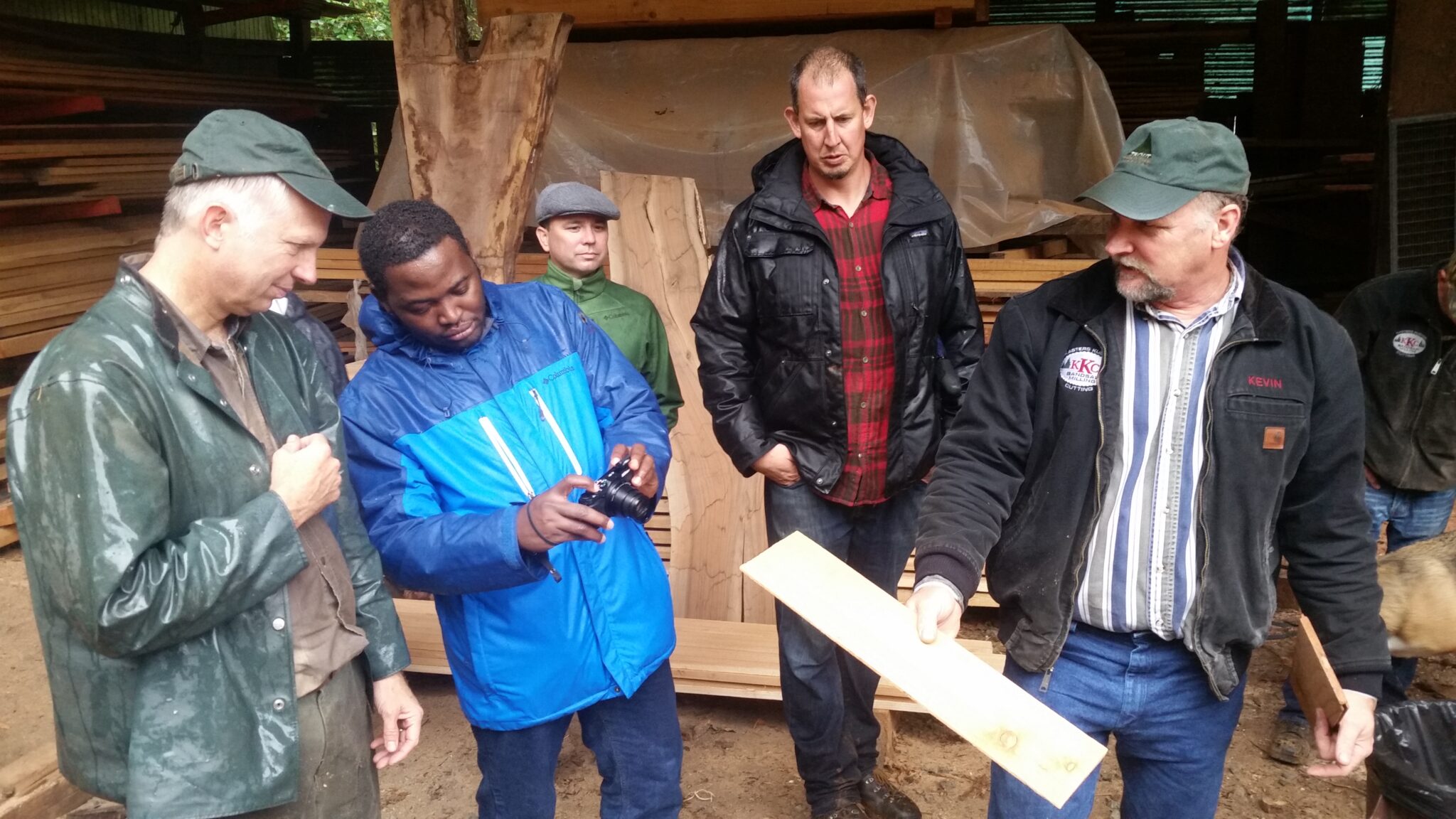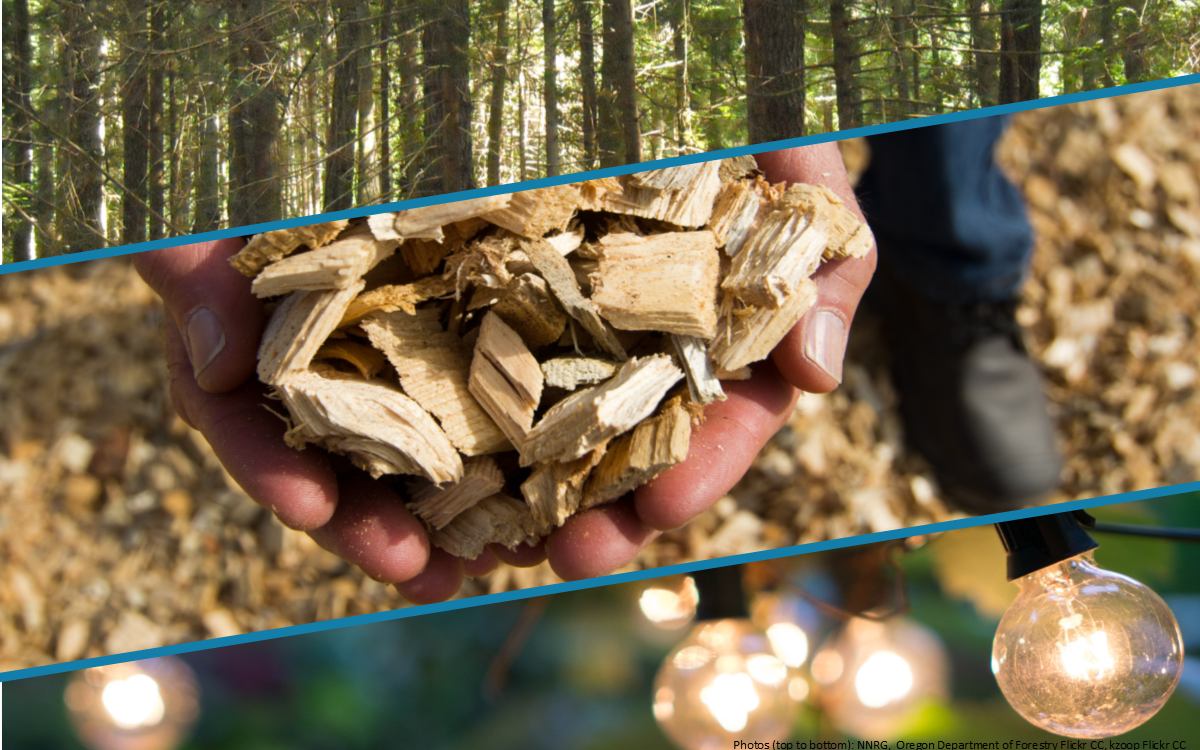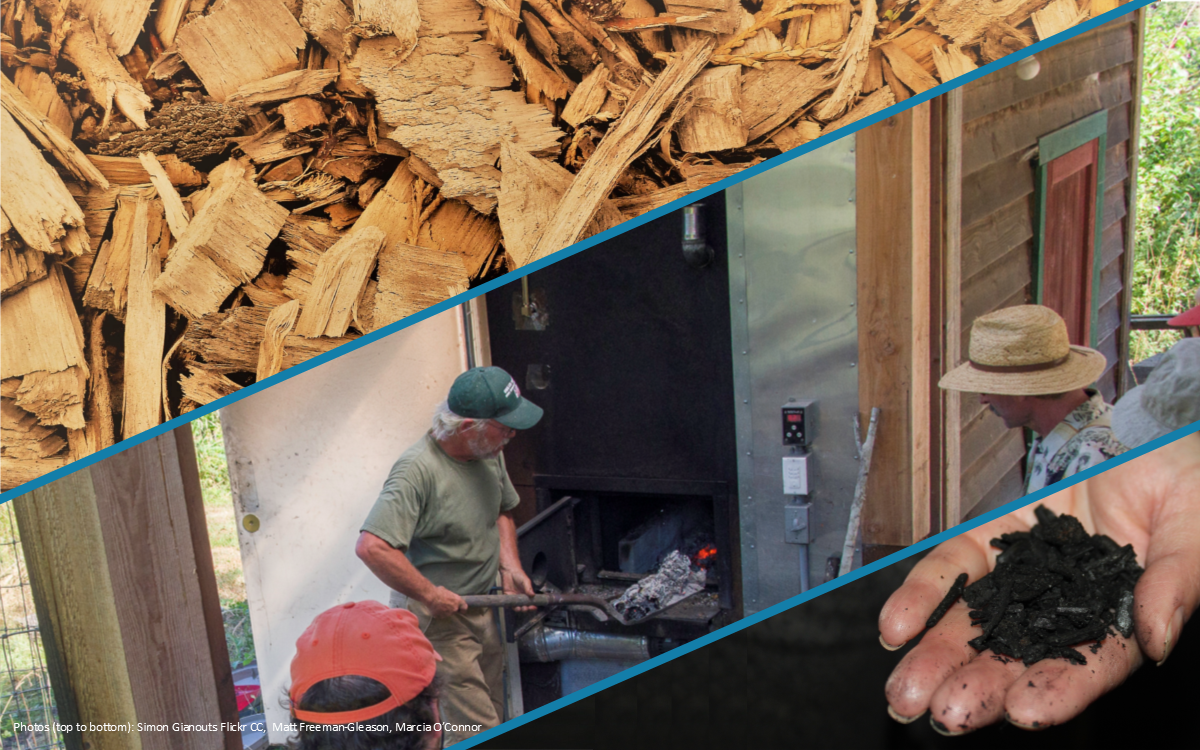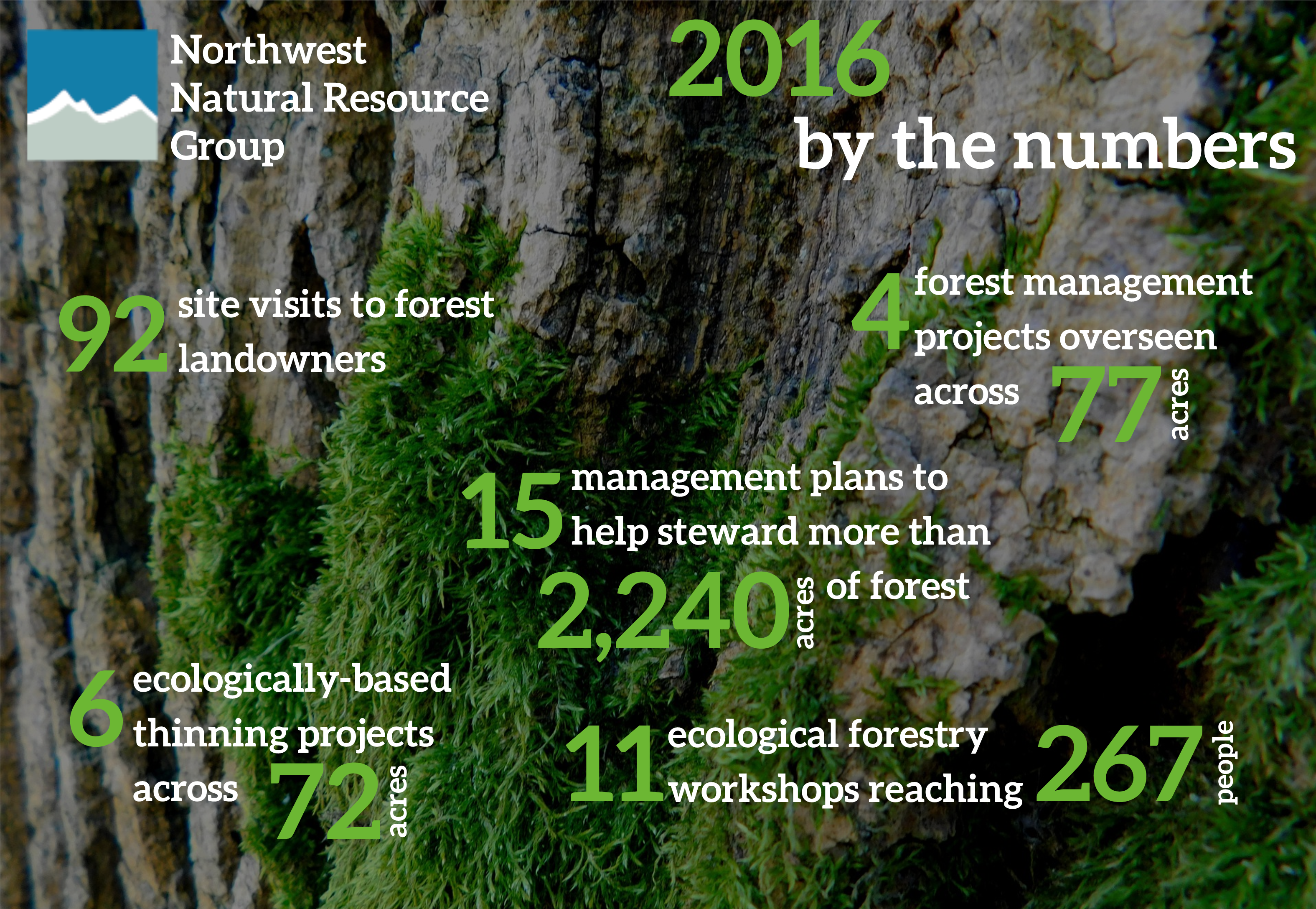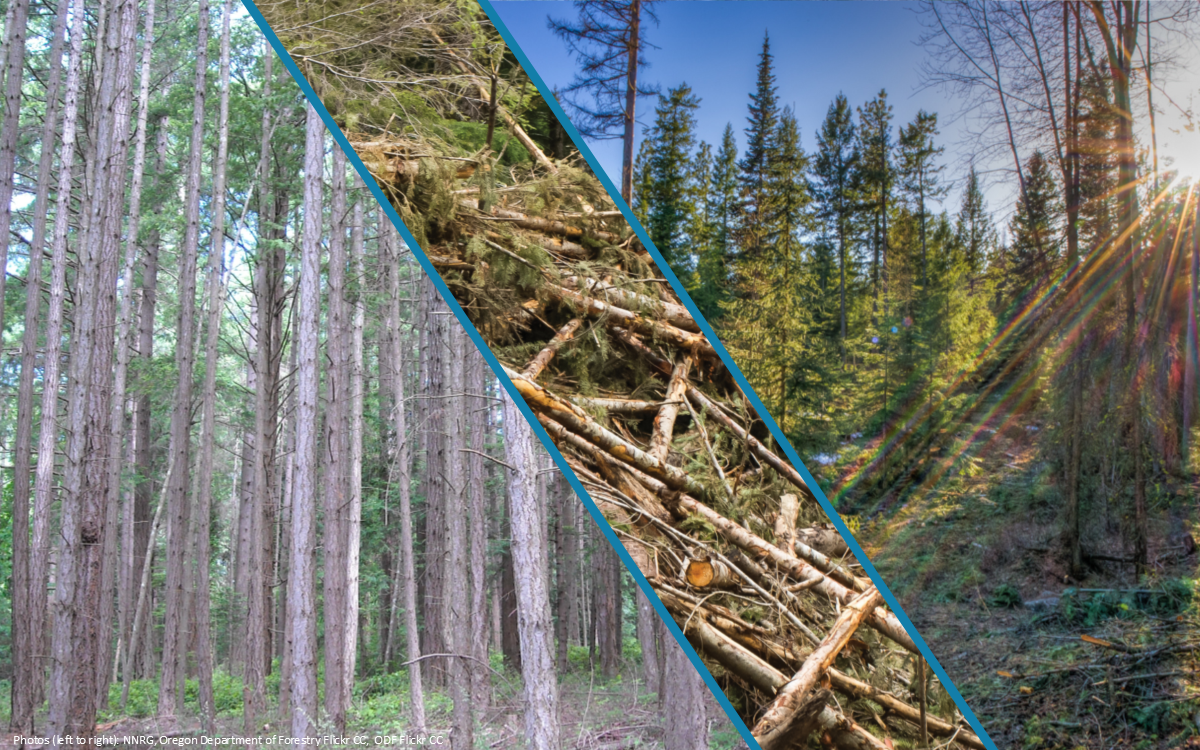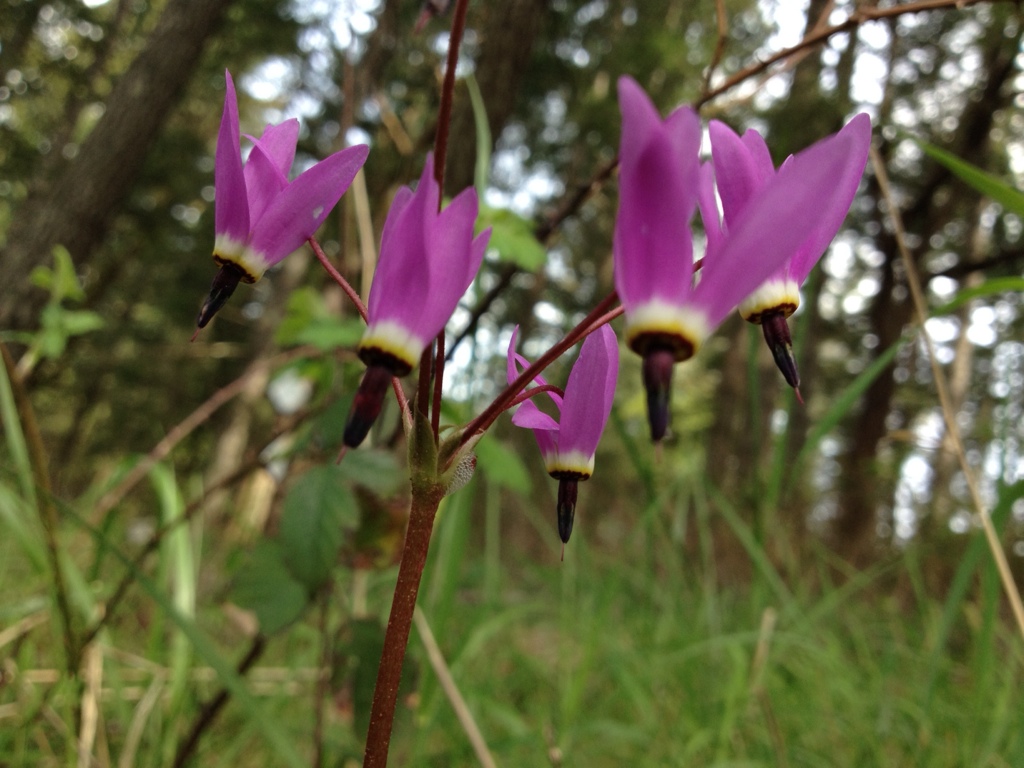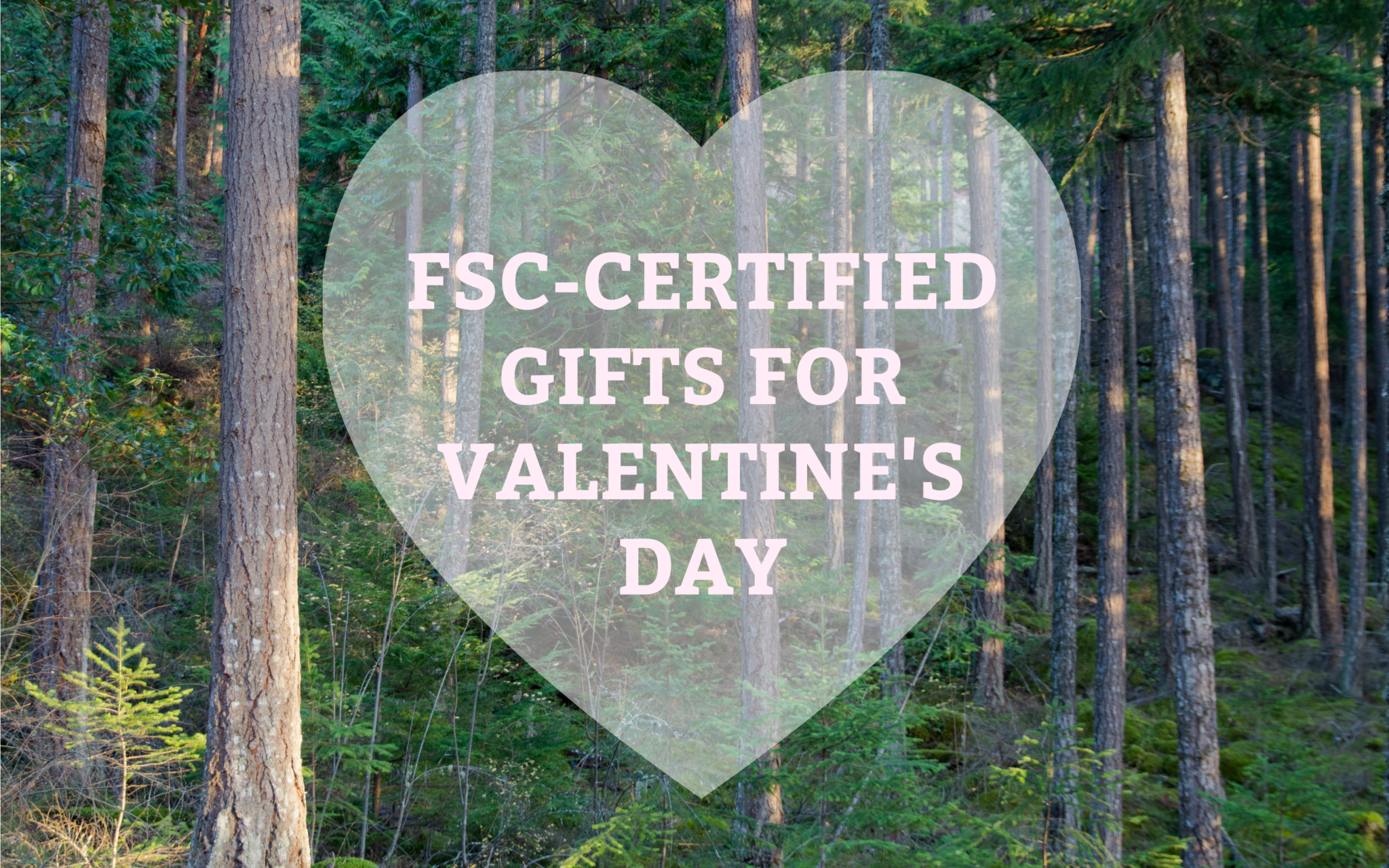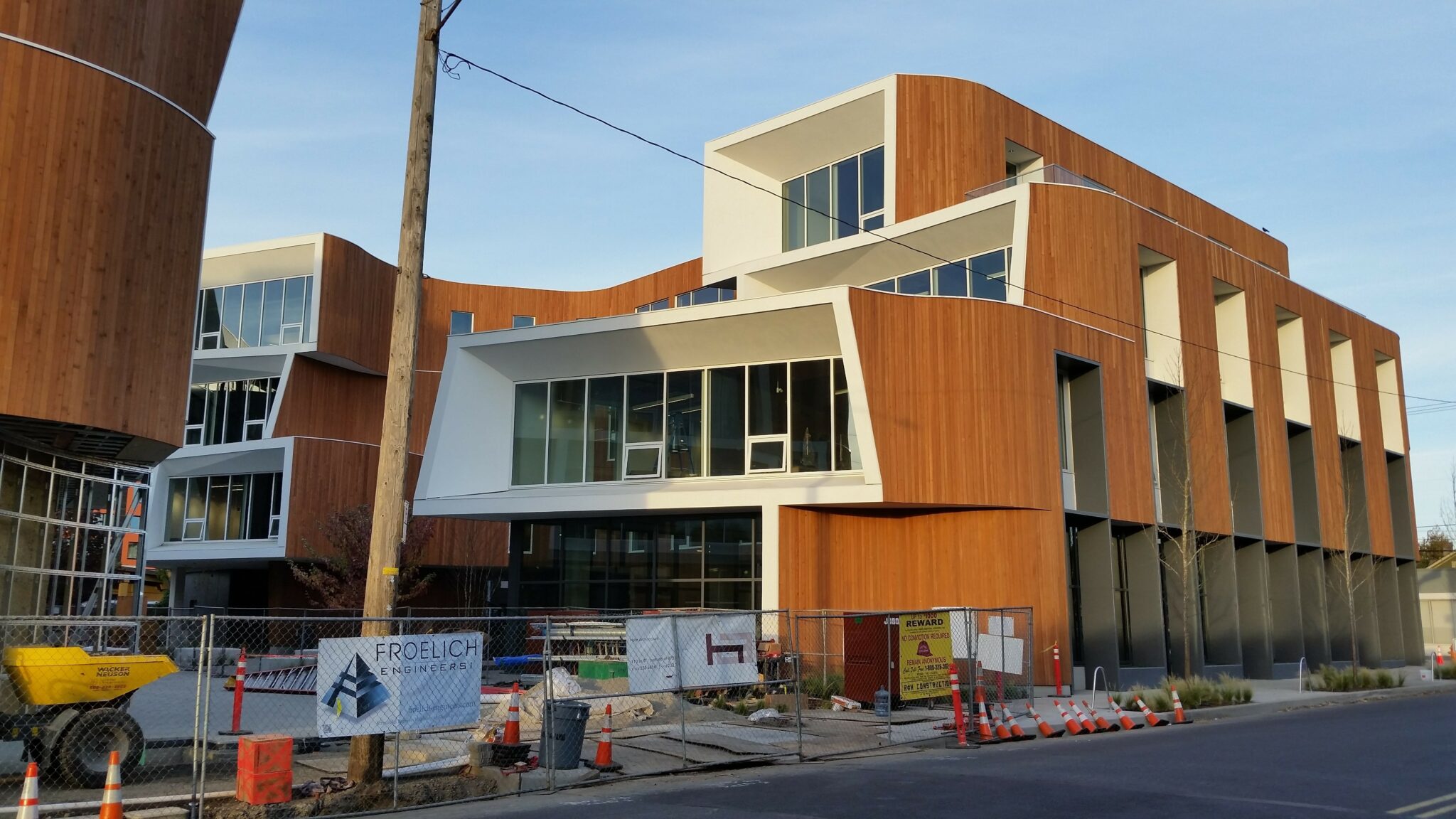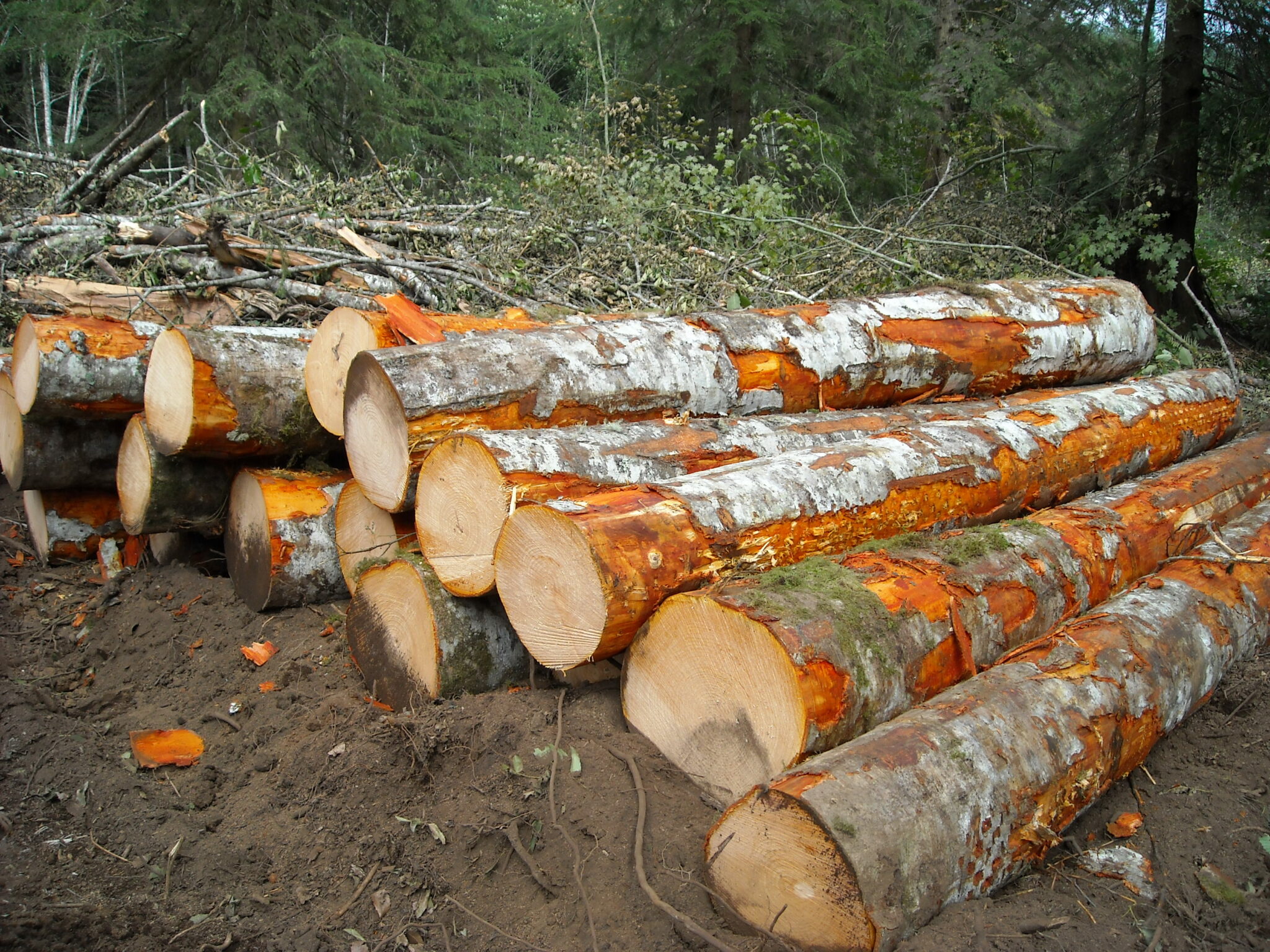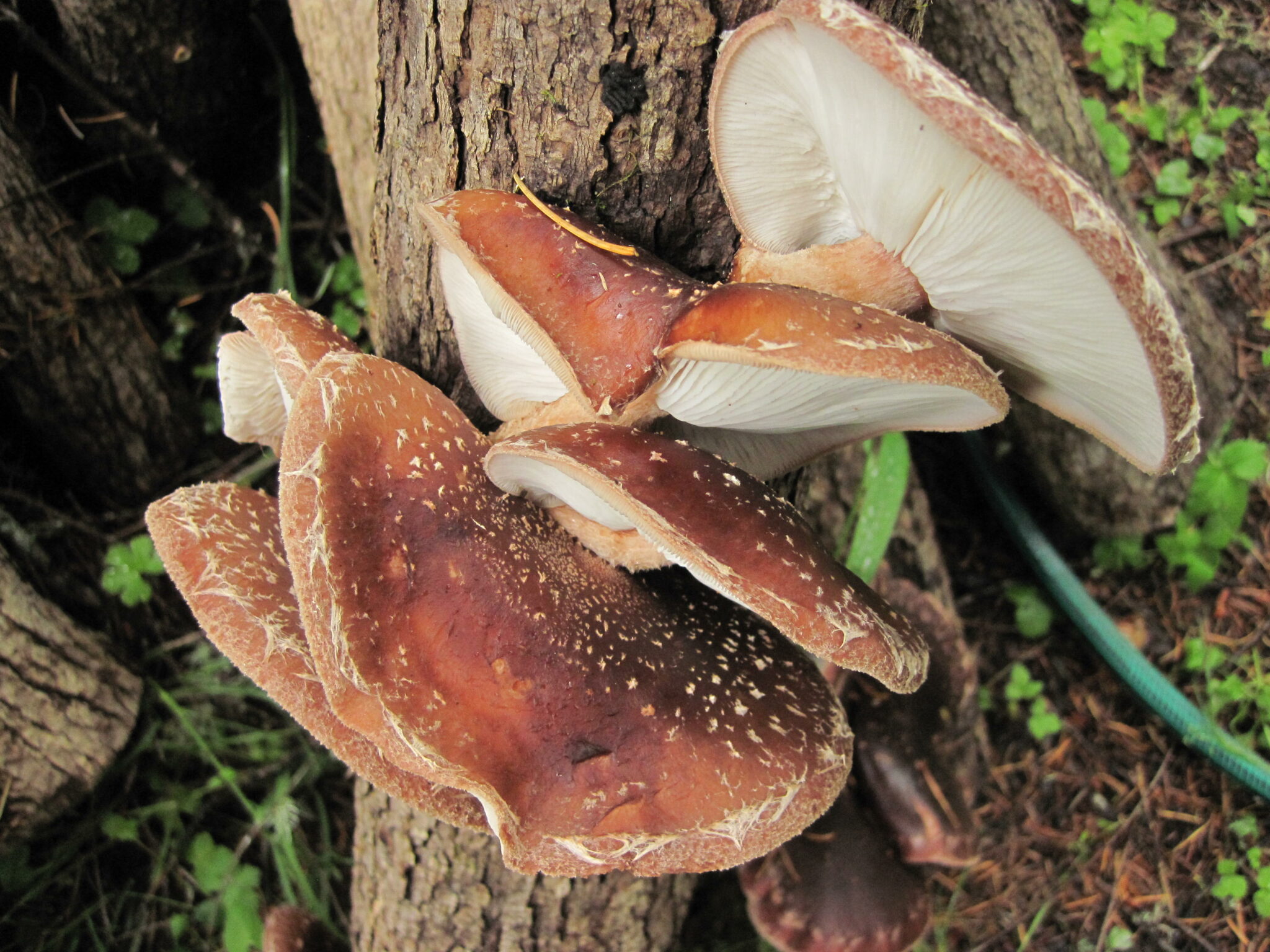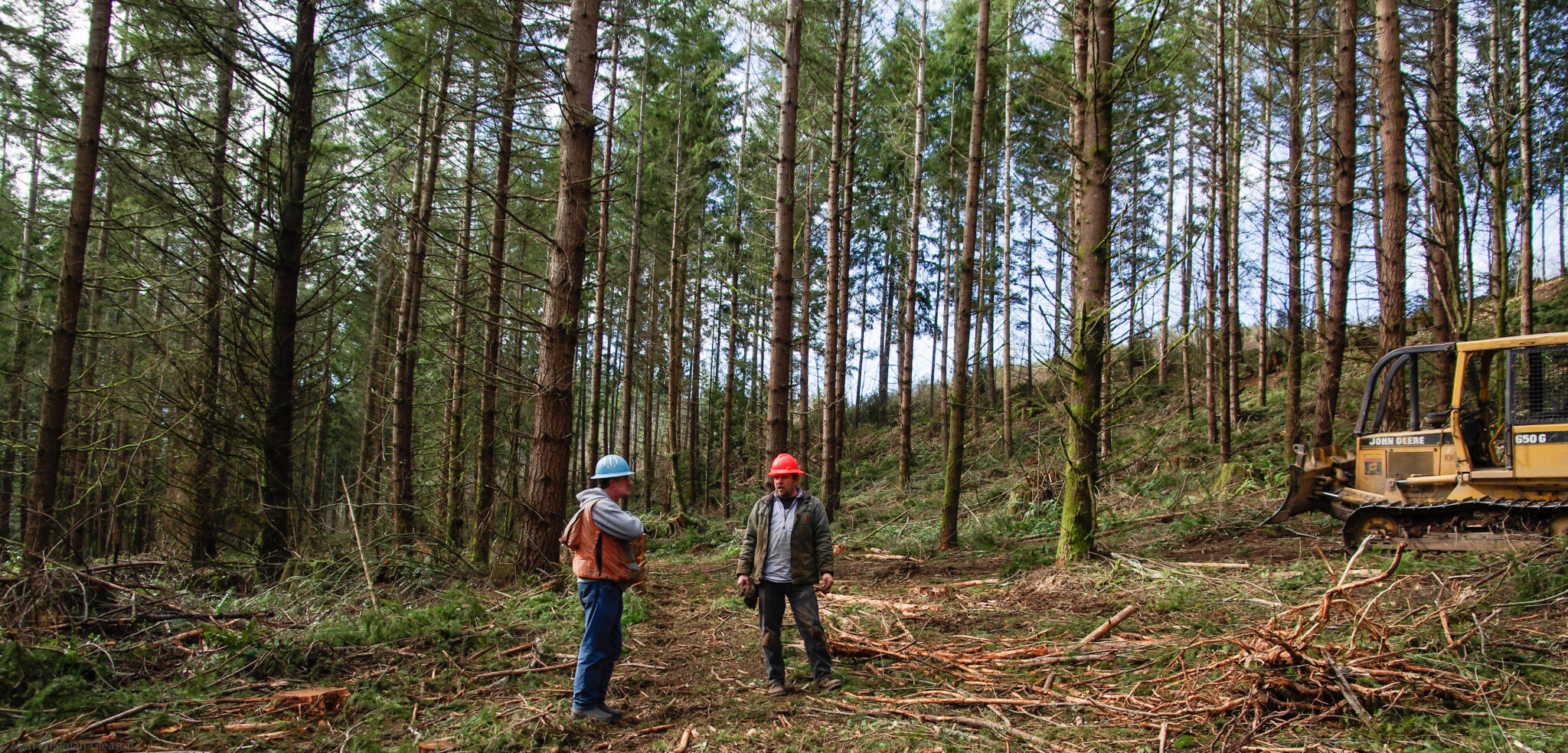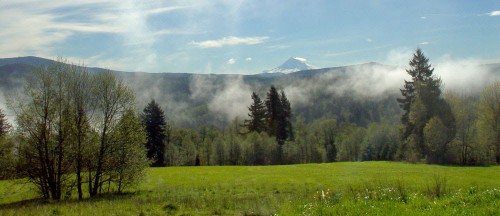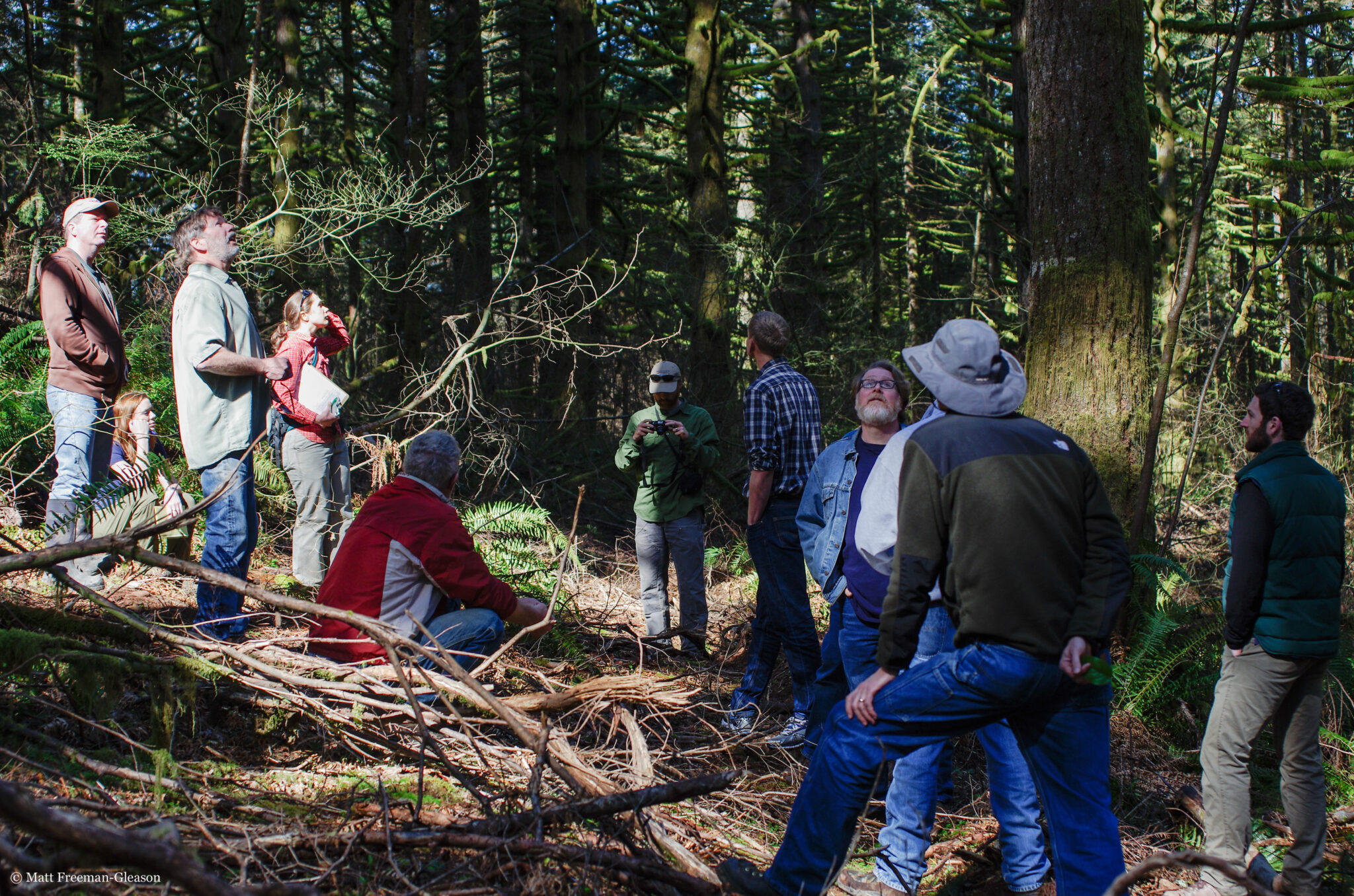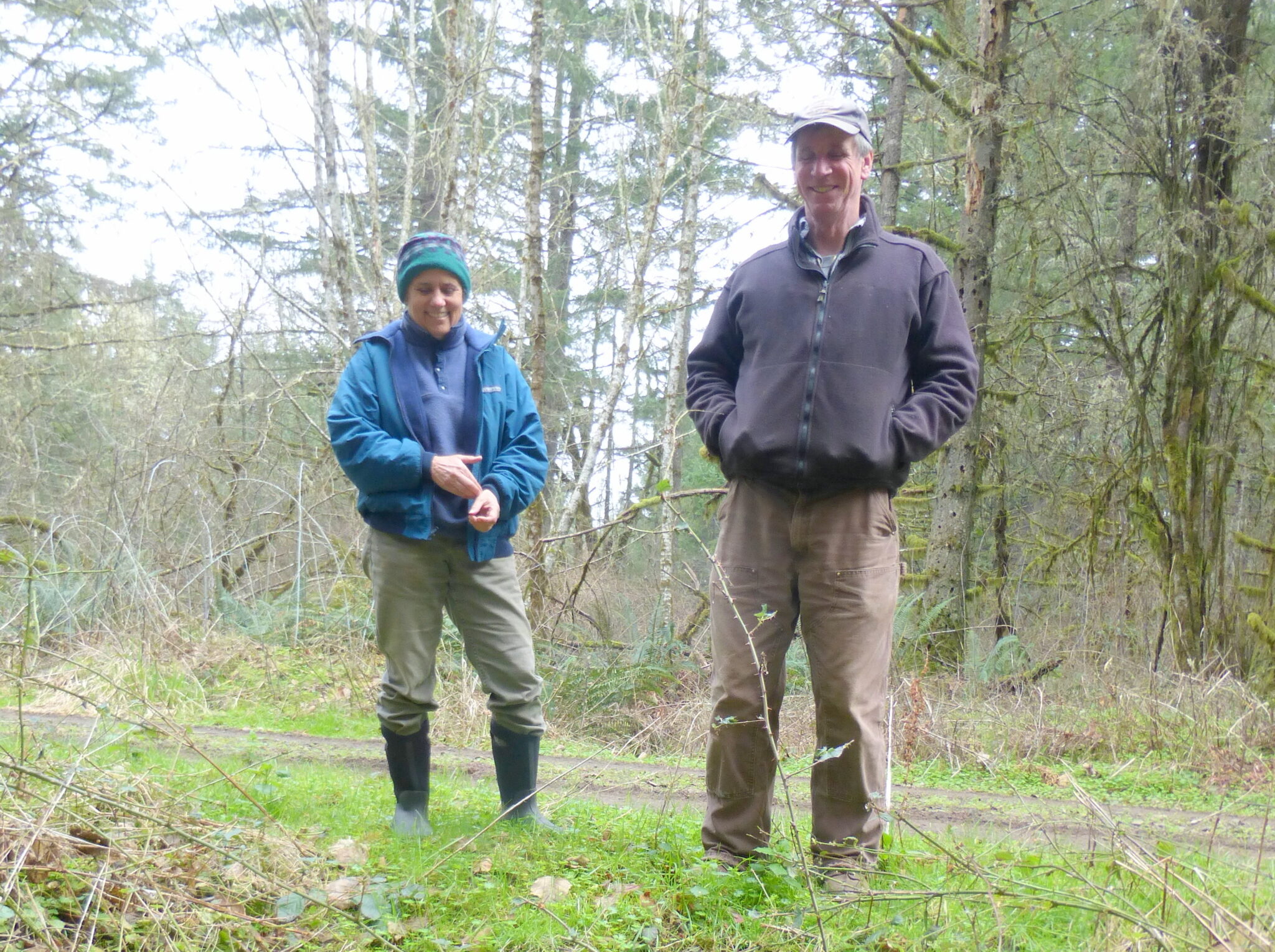Wood products
Blakely Island Timber
Up in the San Juans Islands, our Forest Stewardship Council®-certified member Blakely Island Timber cares for more than 2,200 acres on namesake Blakely Island. Harvesting timber is a tool to achieve their goal of stewarding the forest with a healthy, productive long into the future. Douglas-fir grows much more slowly in the San Juans than […]
Forest Tour: Many Shapes & Sizes
Kevin Kaster (right), owner of a small-scale sawmill in Clackmas Co., presents a sample product to forest managers, designers, and woodland owners. A Tour of “GOOD WOOD” Management and Products REGISTER TODAY! Can a forest be managed for different purposes? Why might one tree be cut and another left standing? How does the way our […]
Workshop: Energy Opportunities for Woody Biomass
Options for San Juans Forest Owners REGISTER TODAY! Woody biomass in densely stocked San Juan forests may present an opportunity to support local energy needs. This workshop will discuss examples of community-based energy projects from throughout the Pacific Northwest. Learn about the cost-effective methods for converting biomass into energy to heat and power our houses, […]
Workshop: Biochar 101-Making Biochar from Woody Biomass
Benefits for Farms and Forests Learn How to Make Biochar: REGISTER TODAY! Biochar, a charcoal made from woody biomass that stores carbon and improves soil, is an emerging option for forest owners to generate income and remove excess wood from densely stocked forests. Biochar can increase agricultural productivity, improve soil fertility, and help mitigate climate change. […]
By the Numbers: 2016 Accomplishments
2016 was an incredible year for Northwest Certified Forestry members and the forests they steward. Because of the dedicated community of ecologically-minded woodland owners, Pacific Northwest forests are healthier, more resilient homes for wildlife and people alike. Here are some highlights of our year: Accomplishments: We hosted 11 workshops on ecologically-based forest management, precision tree-felling, forest […]
Workshop: Utilizing Woody Biomass to Reduce Fire Risk
Fire Ecology and Active Management in San Juan Forests REGISTER TODAY! Many forests in the San Juan Islands are comprised of extremely dense small diameter trees. These dense stands are at high risk for forest fire, have stagnant growth and low timber quality, and present very poor wildlife habitat. This workshop will go over the […]
Member Spotlight: Oak restoration & attuning to “hidden” wonders
When Jeanie Taylor and her husband, Tom Lenon, saw their forest for the first time they knew it was home. While the 20 acres in the Gopher Valley hills of Yamhill County was riddled with scotch broom and blackberry, it also supported Oregon white oaks and suggested the potential to provide habitat for endangered Fender’s blue butterfly, threatened […]
FSC Your Valentine’s Day
However you choose to spend February 14th The Forest Stewardship CouncilⓇ (FSCⓇ) certifies forests and forest products that meet stringent standards of environmental sustainability. What better way to celebrate your loved one than with these luxurious picks? [table id=3 /] Go on a date in an FSC certified forest: Turtleback Mountain | Orcas Island, WA Discovery Park | Seattle, […]
From stump to Stumptown
The farm-to-table movement resonates with citizens of the Pacific Northwest. We shop at local farmers markets, participate in CSAs, buy eggs from our neighbors who raise chickens. We care so much about where our food comes from – and its well-being – that the show Portlandia pokes fun at us Oregonians and Washingtonians wanting to “meet the […]
Workshop: Optimize the Value of Your Timber – November 7
Recognizing the value of the timber you have can be the difference between selling a veneer-grade log at pulp prices instead of the market premium. By understanding the specialty product markets for veneer, figured wood, pole-quality timber, and export logs you can extract the highest value for your timber. It’s important to understand the niche markets […]
Member Spotlight: Shiitake Mushroom Logs
In our Member Spotlight series, we highlight Northwest Certified Forestry (NCF) members who have used forest products for unique and entrepreneurial purposes on their land and within their communities. Often these projects help members earn supplemental income. For the second installment in the series, we introduce you to Gopher Valley Botanicals, a Forest Stewardship Council® certified member of our group certificate, who has sourced non-timber […]
Workshop: How to Manage a Timber Sale – August 15
Harvesting and marketing timber can be one of the most rewarding experiences of owning forestland… it can also be one of the most challenging. On Saturday, August 15, join us for a workshop to learn how to manage a timber sale on your land and effectively market your wood products. This day-long seminar will introduce landowners to […]
Build Local Alliance’s Summer Tour – June 27
The Build Local Alliance (BLA) is a network of foresters, land stewards, millwrights, craftsmen, contractors, and architects interested in creating with wood from well-managed forests in Oregon and SW Washington. Each season BLA hosts a talk or field trip to connect our community of practitioners. We share ideas, showcase projects, and often enjoy well-crafted beer! NNRG is a supporting member of […]
Sustainable forestry in Clark County
In southwest Washington, Clark County Department of Environmental Services exemplifies how to transition forest land from passive management to active management. Starting in 2011, the County developed forest stewardship plans for its recently acquired properties. Today, the County is using selective thinning and other techniques to improve overall health of these forest ecosystems that supports a diversity of plants […]
Hyla Woods on OPB’s Oregon Field Guide
How often can we meet the forest where our table came from? When you purchase wood locally from forest owners like Peter and Pam Hayes of Hyla Woods there’s the a unique opportunity to meet the forest and know that it’s a healthy, diverse ecosystem. Peter and Pam are students of their land and steward […]
Wetset Enterprises
Wetset Enterprises, Mossyrock, WA By Kirk Hanson Thomas Wolfe once famously stated that “you can’t go home again”. NCF member Micheal Hurley begs to differ as he gradually exchanges a 30-year career that took him all over the world for the woods of his childhood. Nestled into the headwaters of Salmon Creek in the foothills […]
Wild Thyme Farm
Wild Thyme Farm, Oakville, WA By Jennifer Whitelaw John Henrickson’s land speaks to him, and he thinks more people should listen. “We need more people to develop that relationship – to fall in love with the land,” he said. The particular object of John’s affection is Wild Thyme Farm, a 150-acre forest in the Oakville […]
Clyde Tree Farm
Clyde Tree Farm & Northwest Sustainable Wood Products, Silverdale, WA By Jennifer Whitelaw Helen and Drew Daly have 154 acres of Forest Stewardship Council™ (FSC®) certified forestland near Silverdale in Kitsap County along the Hood Canal. Helen inherited the property, where she grew up, from her parents, who purchased it in the 1930s after the […]

